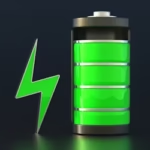Introduction
Knowing what might be wrong is crucial if your automobile suddenly starts to sputter while you’re traveling. Most of the time, a fuel shortage is the cause of an automobile’s difficulties starting or operating. However, occasionally, it might be an electrical problem.
The Engine Control Unit (ECU), the brain of the engine management system, is a crucial component of modern cars. Understanding its role in monitoring and controlling several engine processes to ensure maximum efficiency, lower emissions, and optimal performance can empower you as a car owner.
Short circuits and issues with the ECU wiring can cause a range of problems, from reduced engine performance to complete engine failure. This post will provide a detailed explanation of how to identify and resolve short circuits and ECU wiring issues to ensure your car operates properly.
The ECU: What is it?
The Engine Control Module (ECM), also known as the ECU, is an embedded system that not only controls how the engine operates but also plays a crucial role in detecting and responding to electrical issues, such as short circuits.
It reads data from multiple sensors surrounding the engine and other critical components, adjusts ignition timing and fuel injection, and makes further adjustments to maintain optimal engine performance.
Why Is It Important?
The ECU relies on an intricate network of wires, including power supply lines, sensor lines, and actuator control lines, to receive sensor inputs and deliver outputs to actuators. The ECU transmits and receives vital signals that control and track engine performance through these cables.
Any interference with these signals could lead to poor performance, misfires, erroneous measurements, or even engine failure. Thus, maintaining the integrity of the ECU wire is essential.
A Short Circuit: What Is It?
A short circuit occurs when the wiring harness in your car is damaged or defective. The harness shunts or switches electricity across circuits before it reaches its destination, causing your car’s engine to splutter or perhaps stop working altogether.
Electrical problems can be categorized into two types: open circuits and short circuits. Electrical circuits that are shorter than they should be are known as shorts. They may cause your car’s engine to splutter, rendering it inoperable.
Conversely, improperly linked electrical circuits are known as open circuits. A car that won’t start at all or has poor performance is one of the many issues that could result from this.
Although they are both electrical problems, short circuits present different symptoms and issues; it is advisable to take your automobile to a mechanic and have them diagnose any electrical problems you may be experiencing.
Resolving ECU Wiring Problems
Once you’ve identified the damaged wires or connections, here’s how to ensure car electrical repair in Ajman.
- Fix or Swap Out Damaged Wires
- Splicing Wires: If the damage is minimal, you can splice the wire to repair it. Cut out the broken section, then use solder and heat shrink tubing to attach the new wire securely.
- Wire Replacement: If the wire is damaged substantially, it is best to replace it entirely. Verify that the wire you use matches the original gauge and kind.
- Clean the Corroded Connectors
- Use Electrical Contact Cleaner: After applying the cleaner to corroded connections, use a small brush to scrape away any remaining deposits.
- Apply Dielectric Grease: To prevent more corrosion, apply a thin layer of dielectric grease after cleaning.
- Secure Loose Connections
Verify the accurate and secure placement of each connector. Replace any loose or damaged connections with new ones.
- Protect the Wiring
- Use a Wiring Loom: Cover the wiring with a wire loom or conduit to protect it from heat and damage.
- Safe Wire: Use clamps or zip ties to prevent the wire from rubbing against sharp edges or moving parts.
- Conduct a Last Examination
After repairing or replacing the wires, perform a final check to ensure everything is secure and properly connected. To ensure there are no remaining issues, restart the engine and reconnect the battery.
How Can I Repair a Short Circuit?
If you suspect an electrical issue with your car and believe you may have a short circuit, the first step is to locate the source. Shorts can occur in three locations: near the battery, in the cabin, or the engine area. As soon as you’ve determined the brief location, you can begin troubleshooting.
A short circuit can usually be fixed with a few easy fixes. If the issue is in the engine bay, you may need to replace a wiring harness or fuse, or change a switch or connector if it’s located in the cabin. Additionally, you may need to replace the battery or clean the battery terminals if they are close to the battery.
If you don’t think you can handle the repairs yourself, take your car to a mechanic. They will swiftly and easily identify and resolve the issue.
Conclusion
Although ECU wiring problems can cause various engine performance issues, these issues can be effectively resolved through thorough diagnostics and the proper repair techniques. However, ignoring these issues could lead to a fried engine or, worse, a fire. This knowledge should prompt you to feel cautious and responsible, encouraging you to address these issues promptly.











